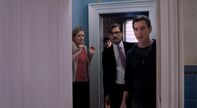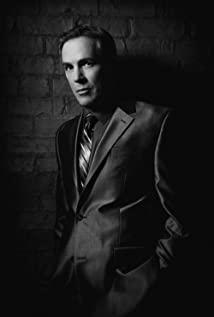It is of course very moving to see Bernadette's genius in the workshop. Blanchett's acting skills have literally brushed this segment to the climax of the film. Her strangeness, perseverance, passion and sexiness as an artist bloom at this moment, but Unfortunately, this is basically impossible. No matter how wonderful it is, it's useless.
The burial of artistic talent for two decades is too fatal and absolutely devastating. Of course, people prefer stories that turn decay into magic. They don't know much about other fields, but it's hard to think about it in art, let alone architectural design that involves a lot of technology. Twenty years? Twenty years? Twenty years? The film often mentions it, with complaints, regrets, and jokes. In retrospect, it weakens the intensity of corruption that has been for a long time.
The Bernadette family lived in the old girls’ school in Seattle, and the meaning of discipline was at a glance. Look at the space where their family of three lives. Is this a place that architects can tolerate? Bad roads, broken carpets, moldy wallpaper (the "Interrogation Room" of "Female Addicts" also has this kind of broken wallpaper), inexplicable confession rooms (this is obviously also a deliberate arrangement, confession, closure, opening, falling, not repair). When I first saw Bernadette talking to Manzura in a warehouse-like room, I thought she was working on a waste site. The carpet was cut open, cut by Bernadette like a thick petal, revealing the mischievous green plants inside. Later, the film also confessed: if this room is a metaphor for Bernadette's wilting, then the apparently super bright green in the later period is the most secretive pivot of the twist.
Reading through Frank Gehry’s biography, I know that although this old guy’s manuscripts are messy, his architect firm has the world’s most advanced modeling and design software, and a large number of calculations make Gehry’s Metal curved surface becomes possible. The point is that this thing is advancing with the times. I still remember watching Bourgeois’s documentary in Shanghai. The old lady sculpted sculptures in the studio, wandering in the mud with her hands, using Nabokov’s sentence. The mud in Bourgeois’ hands is purely her puppet. The manipulation of the image makes people just stare intently and stunned without squinting. I have only watched two videos related to pinching sculptures, and the other is a young artist's work seen by Shenzhen ocat. Putting two recording videos together, the first impression is the difference in the feel of the two female artists. I believe it has something to do with time-Bourgeois has more than 20 years of practice than the latter.
Bernadette's Seattle lives in extreme isolation. From Los Angeles to Seattle, this is her self-exile. Therefore, for her, these twenty years have not only been lost, they have been a loss of time, pain and death occur in every moment of time. How can it be resurrected immediately after plugging in? I feel that the bridge section of the mudslide has a peculiar irony in it. The heavy rain is pouring down, whether it rushes over the embankment and destroys the field, or pours the Holy Spirit depends on the preparation of this piece of soil. Even if it is as strong as Bernadette (the youngest winner of the MacArthur Genius Award, which certainly reminds people of "Marriage Story"), it is hard to beat the 20 years of uninterrupted soil erosion.
Bernadette's husband's epiphany also seems too fake, which is related to the time of twenty years. Can a romantic love story make him aware of his wrong payment to his wife? We can't ignore the reality of how hard a person becomes and feel dominated by a long-term life inertia. How to never understand to understand? There is a shortcut to give or negotiate more freedom. Uncle husband obviously realizes that he and his wife are not the same people, so the film makes him choose this shortcut.
Ha, too naive.
View more about Where'd You Go, Bernadette reviews











